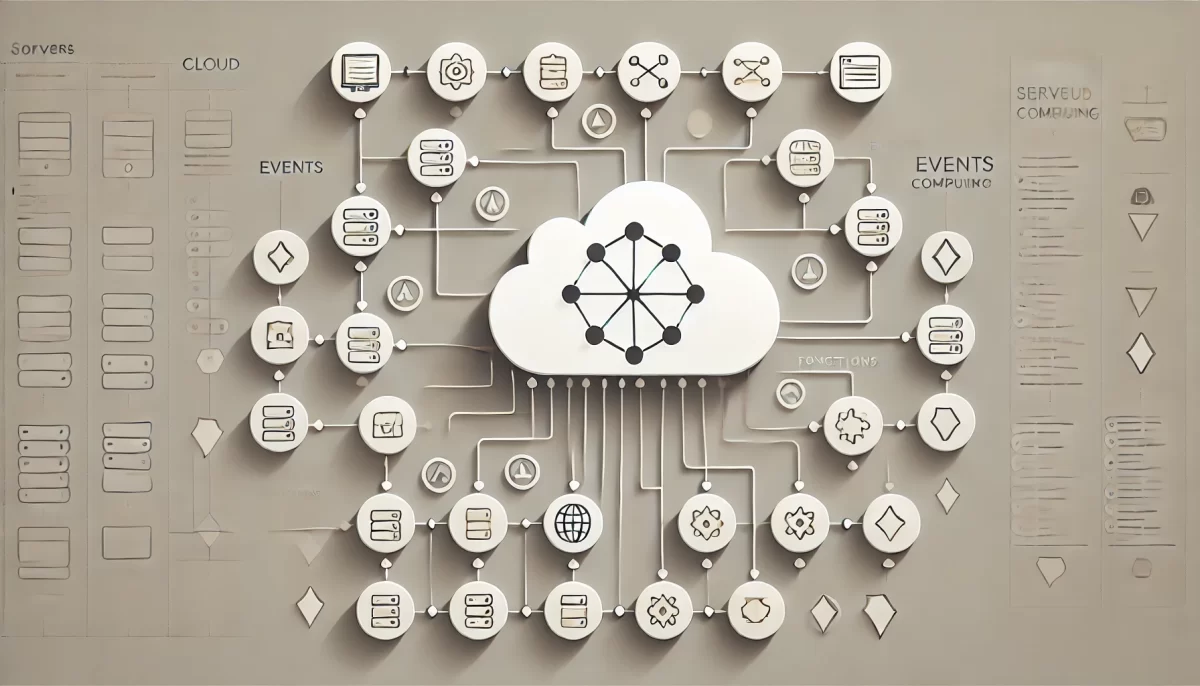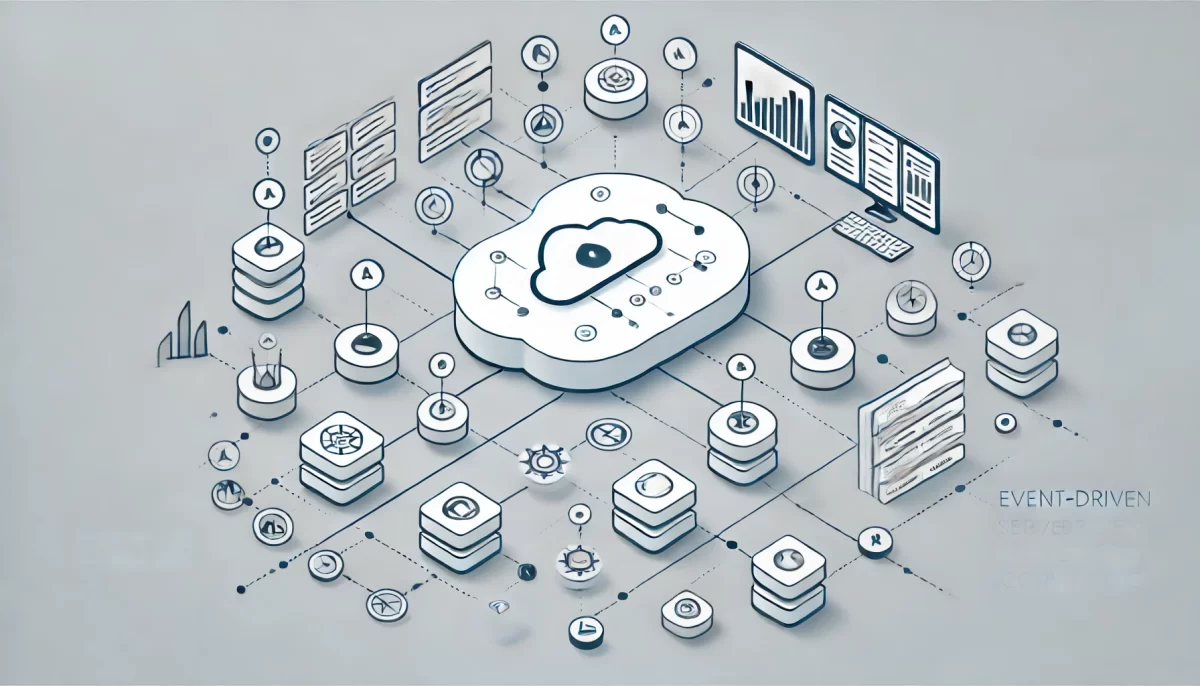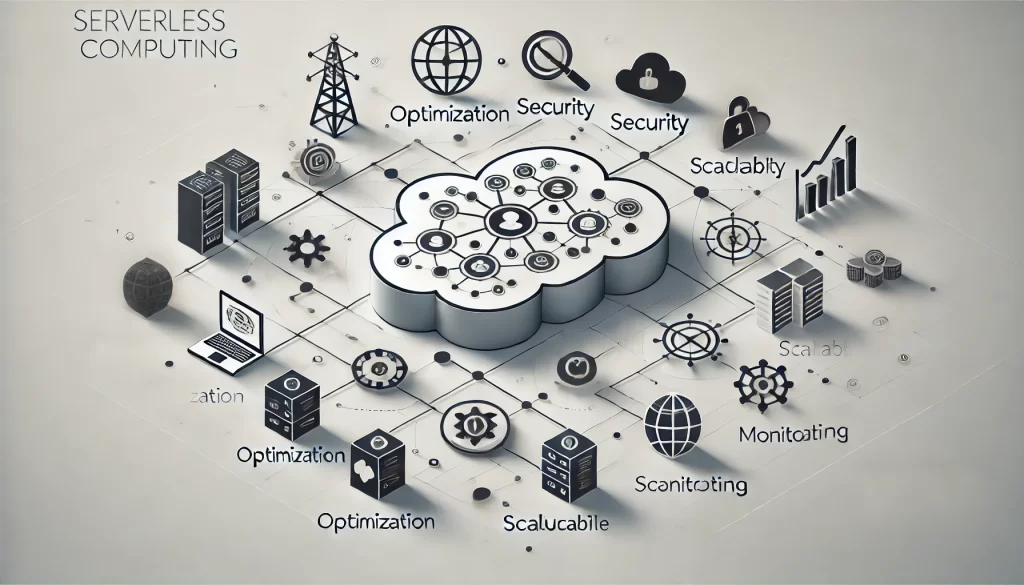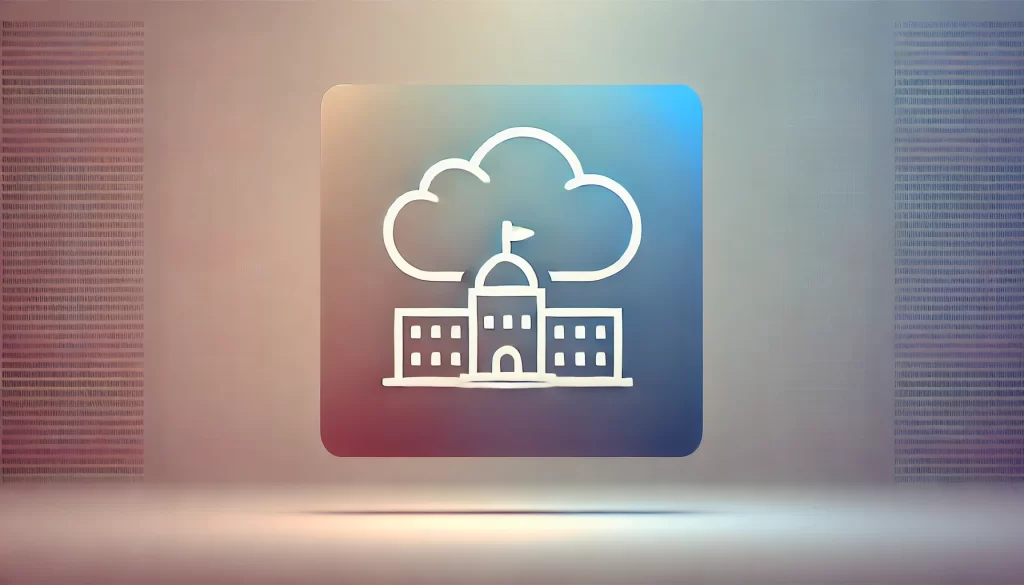The tech landscape is evolving at lightning speed, and one of the most transformative trends of 2024 is serverless cloud computing. This innovative approach is changing how developers build and deploy applications, making it one of the most talked-about topics in cloud computing. But what exactly is serverless computing, and why is it gaining so much traction this year? This article will dive deep into serverless cloud computing, exploring its benefits, key trends, and why it’s becoming the go-to solution for businesses in 2024.
Contents
- 1 Understanding Serverless Cloud Computing
- 2 Key Trends in Serverless Computing in 2024
- 3 Benefits of Serverless Computing
- 4 Challenges and Considerations in Serverless Computing
- 5 Best Practices for Implementing Serverless Computing
- 6 The Future of Serverless Computing
- 7 Conclusion: Why Serverless is the Future
Understanding Serverless Cloud Computing
What is Serverless Cloud Computing?
Serverless cloud computing is a cloud-computing execution model where the cloud provider dynamically manages the allocation and provisioning of servers. The term “serverless” is a bit of a misnomer—servers are still involved, but developers don’t need to manage them. Instead, they write code, and the cloud provider manages the infrastructure. This model allows developers to focus solely on their code without worrying about server management, scalability, or capacity planning.
Serverless computing is typically associated with Functions as a Service (FaaS), where individual functions are executed in response to events. Popular platforms like AWS Lambda, Azure Functions, and Google Cloud Functions offer FaaS, making it easy for developers to deploy code in response to specific triggers.
Why Serverless is the Future
Serverless computing has skyrocketed in popularity due to its ability to offer cost efficiency, scalability, and agility. Businesses only pay for the computing resources they actually use, which can lead to significant cost savings. Additionally, serverless applications automatically scale to handle varying loads without requiring manual intervention. This scalability is particularly beneficial for applications with unpredictable traffic patterns.
Another key advantage is the speed of development. By eliminating the need to manage infrastructure, developers can focus on writing code and deploying features faster. This agility is crucial in today’s fast-paced digital economy, where time-to-market can make or break a product.

Key Trends in Serverless Computing in 2024
1. Integration with AI and Machine Learning
One of the most exciting trends in 2024 is the integration of serverless computing with AI and machine learning. As businesses increasingly adopt AI-driven solutions, serverless computing provides an ideal platform for deploying machine learning models. Services like AWS SageMaker and Google Cloud AI Platform enable developers to train, deploy, and run AI models without managing the underlying infrastructure.
This trend is democratizing AI, making it accessible to more businesses, regardless of their size or technical expertise. By using serverless platforms, companies can integrate AI capabilities into their applications quickly and cost-effectively, driving innovation across industries.
2. Event-Driven Architectures
Another significant trend is the rise of event-driven architectures in serverless computing. Event-driven architecture is a design paradigm where the flow of the program is determined by events such as user actions, sensor outputs, or messages from other programs. This approach is particularly well-suited to serverless environments, where functions are executed in response to specific triggers.
In 2024, Event as a Service (EaaS) is gaining traction, allowing developers to build highly responsive applications that react in real-time to changes in data or user behavior. Platforms like AWS EventBridge and Azure Event Grid lead the way, providing powerful tools for building event-driven serverless applications.

3. Convergence with Containers
The convergence of serverless computing and containers is another trend to watch. Containers have become a staple in modern application development, offering a way to package applications and their dependencies into a single, portable unit. Now, developers are increasingly using serverless containers to combine the benefits of both technologies—portability, security, and isolation.
Platforms like AWS Fargate and Azure Container Instances are making it easier to run serverless containers, allowing developers to enjoy the simplicity of serverless computing with the added flexibility and control that containers offer. This trend is particularly important for enterprises that need to maintain strict security and compliance standards while taking advantage of the benefits of serverless architecture.
Benefits of Serverless Computing
Cost Efficiency
One of the most compelling reasons businesses are flocking to serverless computing in 2024 is the cost savings it offers. Traditional server-based models require businesses to pay for server uptime, even when the server is idle. With serverless, you only pay for the compute time your code uses, which can lead to significant cost reductions.
Additionally, serverless computing eliminates the need for over-provisioning. In a traditional setup, businesses often need to provision more servers than handle peak loads, leading to wasted resources. On the other hand, serverless architecture scales automatically to meet demand, ensuring that you only pay for what you use.
Scalability and Agility
Another major advantage of serverless computing is its inherent scalability. Serverless applications can scale automatically in response to demand without any manual intervention, making them ideal for applications with unpredictable or highly variable traffic patterns.
Moreover, serverless computing offers unmatched agility. Developers can deploy new features and updates rapidly without worrying about the underlying infrastructure. This speed is crucial in today’s competitive landscape, where businesses must continuously innovate to stay ahead.
High Availability and Fault Tolerance
Serverless platforms are designed with high availability and fault tolerance in mind. Since the cloud provider manages the underlying infrastructure, businesses can rely on the platform to handle failures and ensure that their applications remain available and responsive. This is particularly important for mission-critical applications where downtime is not an option.
Challenges and Considerations in Serverless Computing
Security and Compliance
While serverless computing offers numerous benefits, it also presents some unique challenges, particularly in security and compliance. Since the cloud provider manages the infrastructure, businesses must rely on the provider’s security measures to protect their data and applications. This can be a double-edged sword—while cloud providers typically offer robust security features, businesses have less control over the security of their applications compared to traditional server-based models.
Moreover, compliance with regulations such as GDPR, HIPAA, and others can be more complex in a serverless environment. Ensuring that data is handled in accordance with legal requirements requires careful consideration of how and where data is processed. Businesses must work closely with their cloud providers to ensure their serverless applications meet compliance standards.
Cold Start Latency
Another challenge associated with serverless computing is cold start latency. When a serverless function is not used, the cloud provider may deallocate the underlying resources. When the function is invoked again, allocating resources and initializing the function may take some time, leading to a delay known as a “cold start.” While many cloud providers are working on reducing cold start times, it remains a potential drawback for latency-sensitive applications.
Vendor Lock-In
Vendor lock-in is another important consideration. Since serverless architectures are often tightly integrated with specific cloud provider services, migrating an application from one provider to another can be challenging. Businesses must weigh the benefits of serverless computing against the potential difficulties of switching providers in the future.
Best Practices for Implementing Serverless Computing
1. Start Small and Scale Gradually
When adopting serverless computing, it is often best to start with small, non-critical applications. This allows your development team to familiarize themselves with the new architecture without the pressure of managing mission-critical workloads. As your team becomes more comfortable with the technology, you can gradually scale up to more complex applications.
2. Optimize Function Performance
Optimizing your serverless functions will minimize cold start latency and improve overall performance. This might involve minimizing the size of your deployment package, reducing the number of dependencies, or fine-tuning the function’s memory allocation. Regularly monitoring and optimizing function performance will ensure your serverless applications run smoothly.
3. Implement Strong Security Practices
Security should be a top priority when developing serverless applications. This includes following best practices such as using secure coding techniques, implementing proper authentication and authorization mechanisms, and regularly auditing your serverless environment for vulnerabilities. It is also essential to work closely with your cloud provider to understand and implement their security features.

4. Plan for Monitoring and Observability
Monitoring and observability are crucial in a serverless environment. Since you don’t manage the infrastructure, you need robust tools to monitor the performance and health of your applications. Many cloud providers offer tracking services, such as AWS CloudWatch, Azure Monitor, and Google Cloud Monitoring, which can help you track metrics, logs, and events.
5. Avoid Over-Reliance on a Single Vendor
To mitigate the risk of vendor lock-in, consider using multi-cloud or hybrid cloud strategies. By designing your serverless applications to be more portable, you can avoid being too dependent on a single provider. This might involve using open-source tools, containerized functions, or designing your application in a way that can be easily adapted to different cloud environments.
The Future of Serverless Computing
Continued Growth and Innovation
Looking ahead, the future of serverless computing is auspicious. As cloud providers continue enhancing their serverless offerings, we expect to see even more businesses adopting this architecture. Innovations in AI, machine learning, and event-driven architectures will further expand the possibilities of what can be achieved with serverless computing.
Increased Adoption Across Industries
Industries such as finance, healthcare, and retail are already beginning to harness the power of serverless computing, and this trend is expected to accelerate in the coming years. The ability to deploy scalable, cost-effective applications quickly and efficiently is a game-changer for businesses looking to innovate and stay competitive.
Edge Computing and 5G Integration
Integrating edge computing and 5G with serverless architectures will open up new opportunities for real-time applications requiring low latency. This could include everything from augmented reality experiences to autonomous vehicles, further solidifying serverless computing as a cornerstone of modern application development.
Sustainability and Green Computing
As businesses become more conscious of their environmental impact, sustainability becomes a key consideration in technology choices. With its efficient resource utilization, serverless computing is well-positioned to play a significant role in the shift toward greener IT practices.
Related Articles
- Cloud Computing and Roleedge AI: A Revolution in Digital Transformation
- Cloud Computing Essentials Unlock The Benefits Today
Conclusion: Why Serverless is the Future
Serverless cloud computing is not just a trend—it’s a paradigm shift in how we build and deploy applications. With its promise of cost efficiency, scalability, agility, and innovation, serverless computing is set to become the standard for modern application development. As we move further into 2024 and beyond, businesses that embrace serverless architectures will be better positioned to innovate, scale, and succeed in an increasingly competitive digital landscape.
Are you ready to take your business to the next level with serverless computing? The future is serverless, and the time to act is now.




